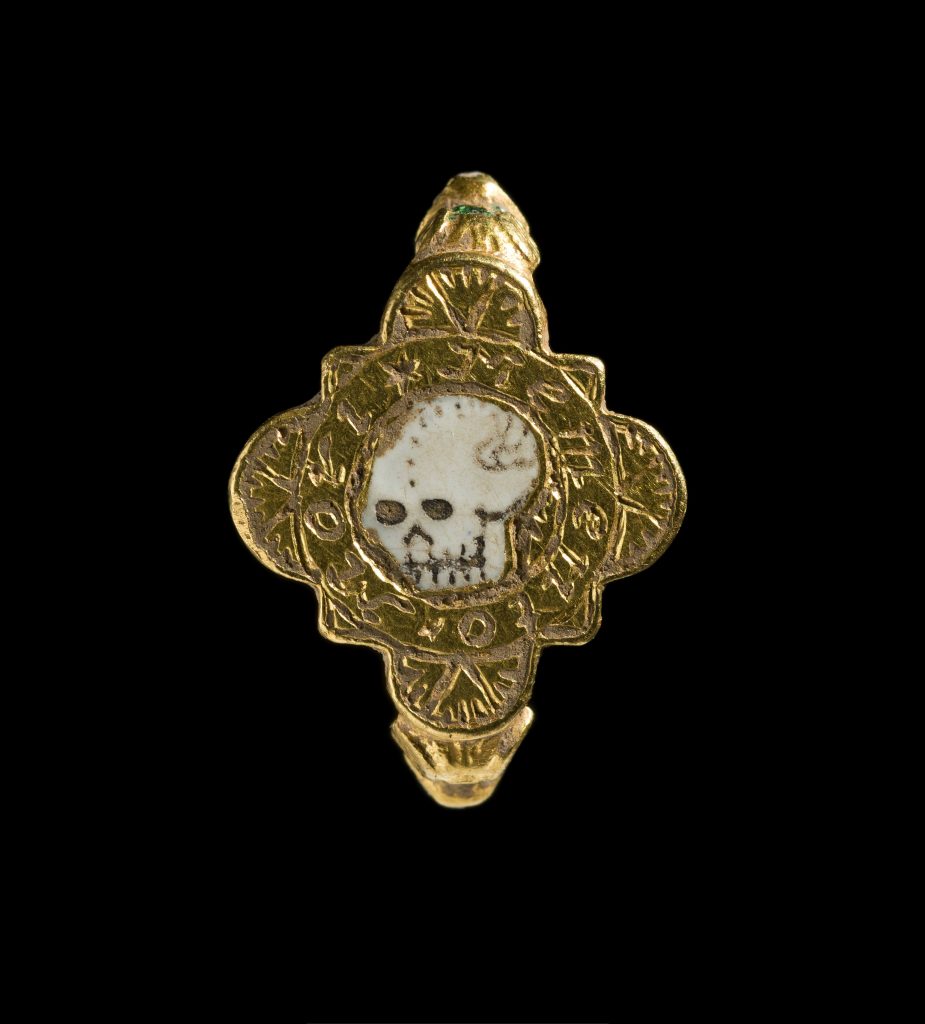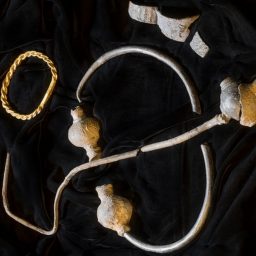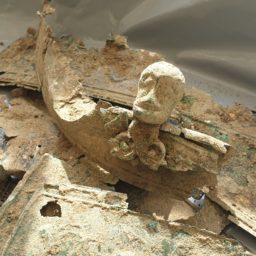Yikes!
A macabre gold ring with a creepy enamel skull was found along with a trove of medieval and post-medieval artifacts by amateur metal detectorists in Wales.
The treasures, which include a cache of Tudor coins emblazoned with Henry VIII’s portrait, likely belonged to elite members of Welsh society between the 9th and 17th centuries.
The creepy crawly ring, which is surrounded by a detailed quatrefoil, was discovered amid other objects in the eastern county of Powys and the Vale of Glamorgan, and reported to authorities in keeping with UK guidelines.
The objects were found by amateurs Chris Perkins and Shawn Hendry in Llanwrtyd Community, and have now been designated as official treasures, meaning they are at least 300 years old and made of at least 10 percent precious metals (gold or silver) by weight.
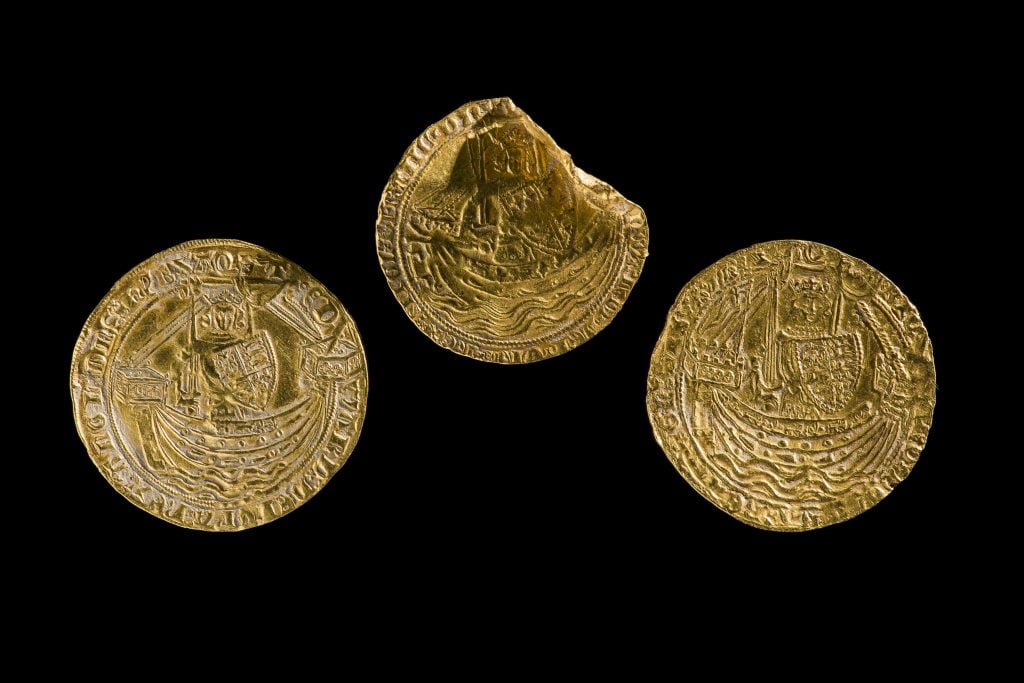
Medieval coin hoard: three gold coins of Edward III and Richard II.© Amgueddfa Cymru–National Museum Wales.
Curator Nigel Blackamore of the Y Gaer Museum, Art Gallery, and Library in the small Welsh town of Brecon said that uncovering such gold coins in the southern area of Powys was a rarity.
“We would welcome the possibility of adding these to [our] new medieval displays,” he added.
The coins are known as nobles, the first English gold coins created in mass quantities, between 1344 and 1346, during the reign of King Edward III. Experts believe they were likely buried and forgotten until now.
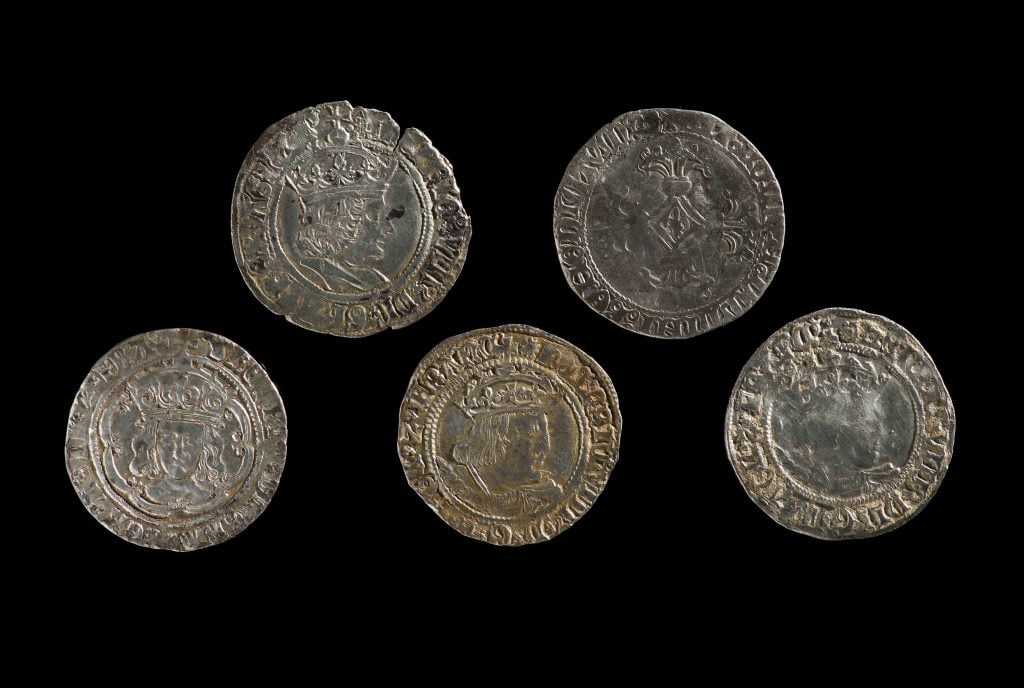
Medieval coin hoard: 5 silver coins of Henry VII, Charles the Bold and Henry VIII. © Amgueddfa Cymru–National Museum Wales.
Another group of coins, known as groats, were found by Aled Roberts and Graham Wood in Churstoke. Some of these bear the profile of King Henry VIII, a ruler known for his extravagant spending, voracious appetite, and murderous anger.
The skull ring, unearthed by David Balfour in Carreghofa Community in Powys, which is inscribed with the words “memento mori,” meaning “remember you will die,” is a rare example of its kind, said Mark Redknap, the deputy head of collections and research of the National Museum of Wales.
“Its sentiment reflects the high mortality of the period, the motif and inscription acknowledging the brevity and vanities of life,” he said.
Other discoveries include an early medieval silver fastener, found by Stuart Fletcher in Churchstoke, and likely used as a decorative flourish to hold a garment. Since 1997, more than 500 treasures have been discovered in Wales, and archaeologists saw a surge in 2019, when 45 were unearthed.
See more images of the discoveries below.
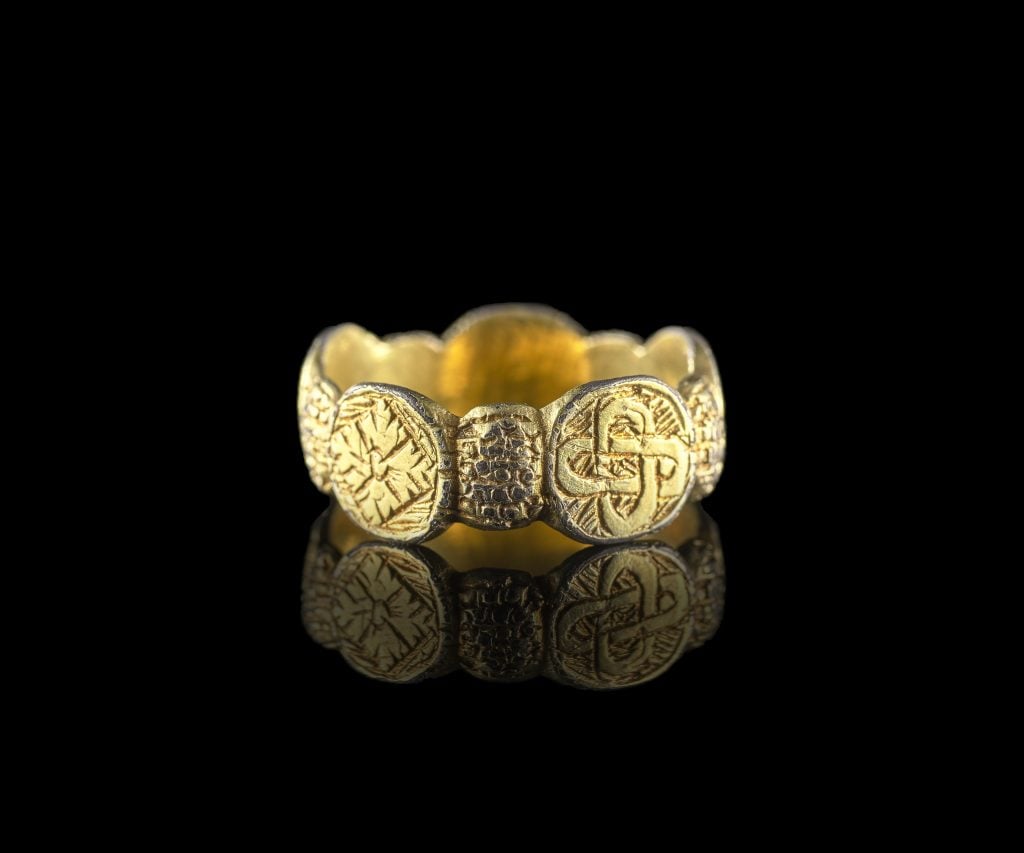
Medieval silver-gilt finger ring. © Amgueddfa Cymru–National Museum Wales.
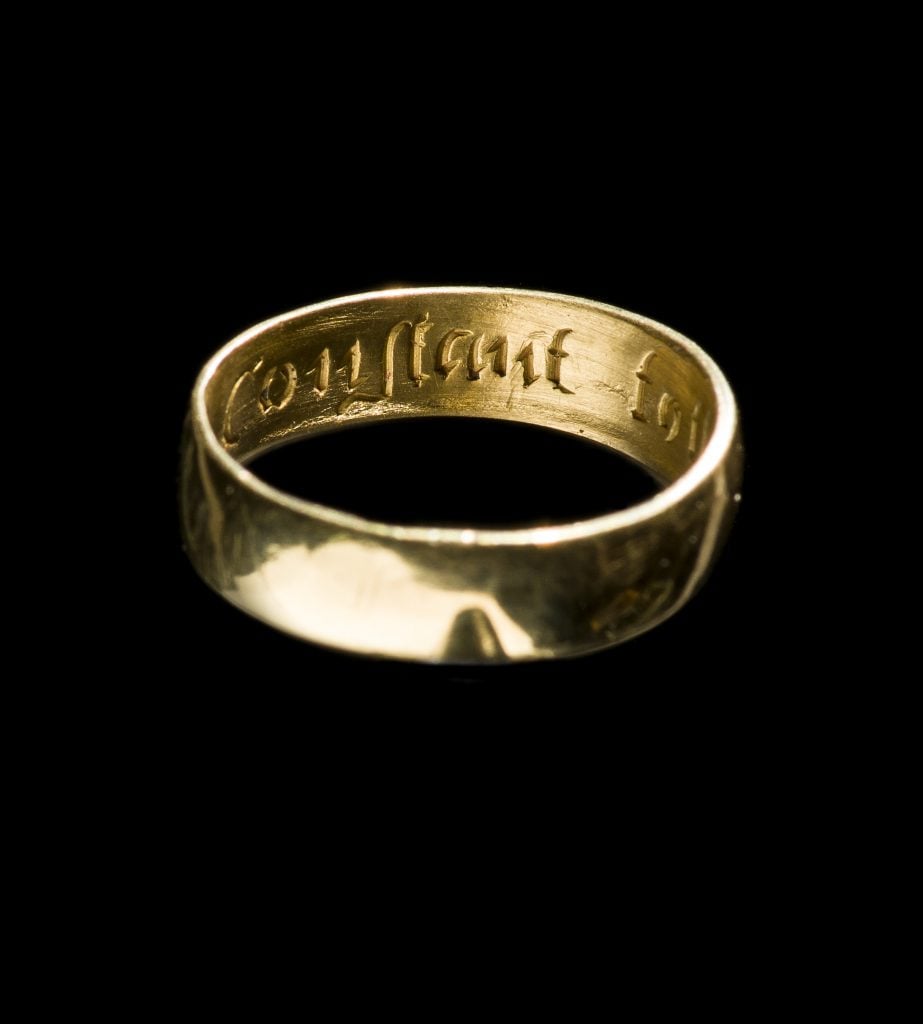
Post medieval gold posy ring from Talgarth.© Amgueddfa Cymru–National Museum Wales.
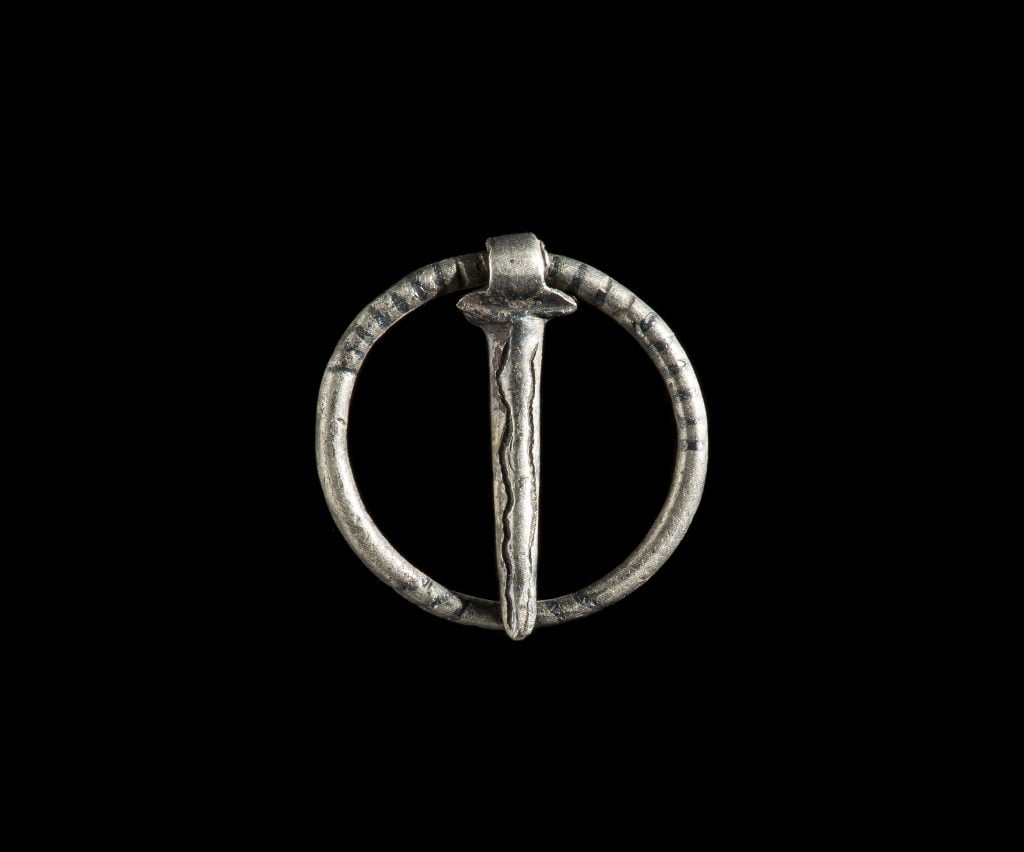
Medieval silver annular brooch from Montgomery. © Amgueddfa Cymru–National Museum Wales.
